An article automatically translated from Chinese by Google translator: 原文網址:https://kknews.cc/history/pvlyn6p.html
2019-11-25 Posted by Museum Great God in History, extended with information from other websites listed at the end.
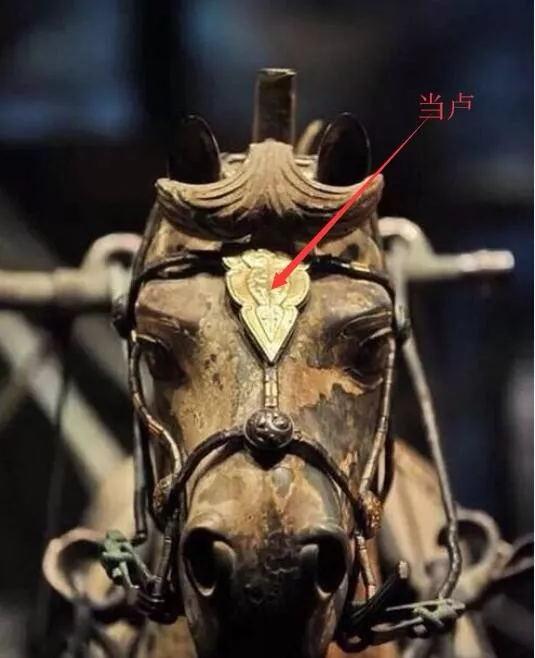
When Lu, at first glance, it sounds like he doesn’t know anything. But it is also called “dang skull”, which is easy to understand, “dang skull” must be related to “cranial”, it is the ornament decorated on the forehead of the horse.

[Qin dynasty, with a pattern of pan-flowers, gold and gold, unearthed from a horse pit of terracotta warriors and horses, and now in the Museum of Emperor Qin Shihuang’s Mausoleum] “The Book of Songs-Daya-Han Yi” contains: “The eyebrow is called tin, carved with gold, and now it is Lu Ye.”

The Western Han Dynasty, a gilt hunting-patterned bronze Danglu [a bird], unearthed from a Han tomb in Mancheng, is now in the Hebei Provincial Museum.
The more common one is that the body looks like a round nail bubble, the upper end is divided into two angles, the lower side hangs a rectangular bridge of the nose, and the back has several horizontal or vertical noses for strapping tied to the horse’s head.
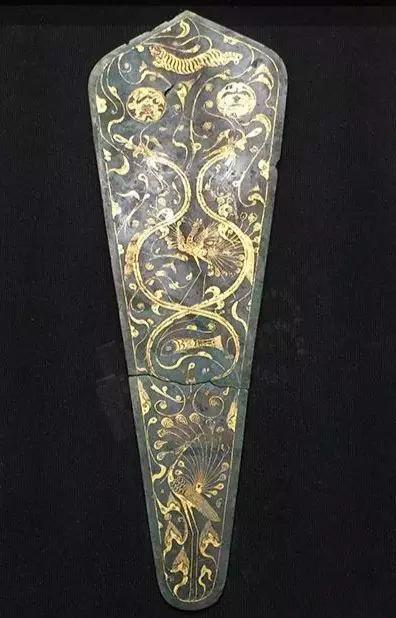
[Western Han Dynasty, wrong gold and bronze Danglu, unearthed from the tomb of Haihunhou]
Danglu appeared in the Shang Dynasty, and Danglu in the Shang and Zhou dynasties is more practical than decorative. It can protect the head of a horse, mostly with plain faces. These Danglu affixed to the horse’s surface are actually the “gold” that is affixed to the hearts of nobles.
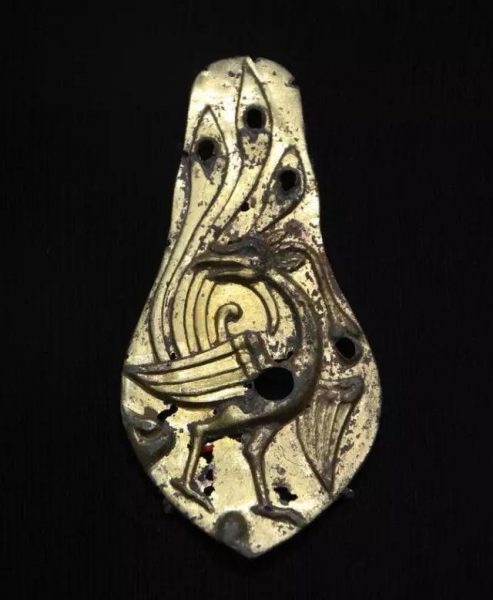
[Gilded bronze phoenix bird pattern Danglu, excavated from the tomb of Haihunhou in the Western Han Dynasty] In the early Western Zhou Dynasty, it inherited part of the Shang Dynasty tradition and formed a unique set of Danglu, horse crown, luang, spear-shaped Heng end decorations, etc. Decorative cart and horse system.
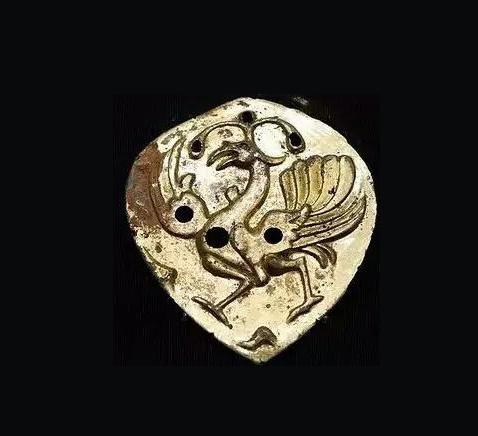
[Western Han Dynasty, gilded bronze with phoenix and bird design as Lu, unearthed from the tomb of Haihunhou] In the late Western Zhou Dynasty, when Lu almost disappeared, it reappeared in the Spring and Autumn Period and became popular in the Qin and Han Dynasties. During the Western Han Dynasty, Danglu was very popular.

Western Han Dynasty, gilded dragon horse bronze Danglu, Zhangqiu Luozhuang Han Tomb No. 11 Chema Pit unearthed, now in the Jinan City Archaeological Institute.
“This exquisite harness ornament portrays a prancing horse whose hindquarters are rotated 180 degrees, a motif that Eurasian nomads transmitted from the shores of the Black Sea to the north and northwest borders of China.” [Description The Met]
Western Han dynasty (206 BCE– 9 CE)
Dimensions: H. 16.5 cm; W. 8 cm
西汉鎏金铜当卢 市博物馆供图
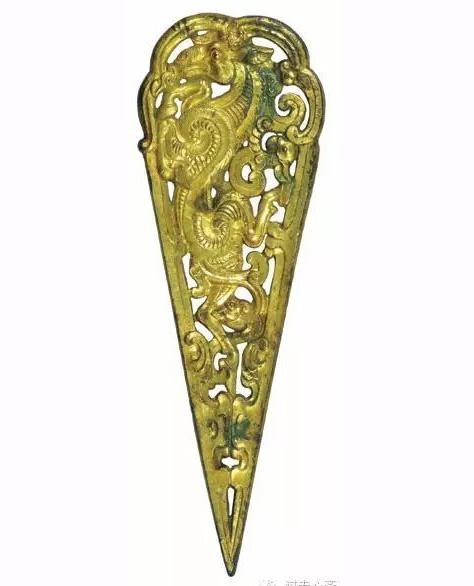
Western Han Dynasty, gilt bronze with dragon and horse design, Danglu, collected by Henan Yongcheng Museum.
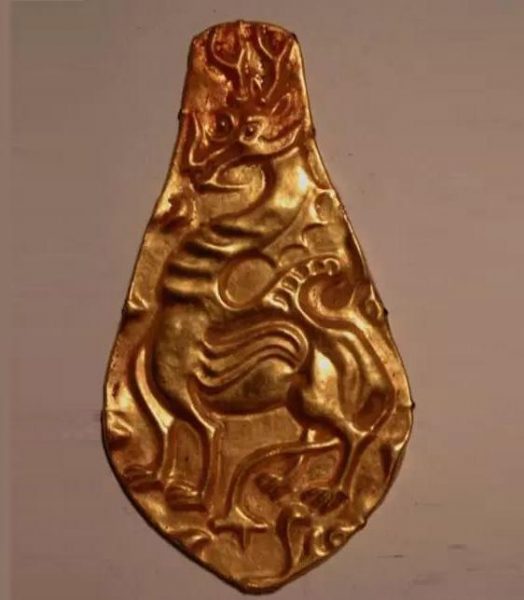
Western Han Dynasty, dragon pattern Jindanglu, unearthed from the Han tomb of the Kingdom of Dian, now in the Yunnan Provincial Museum.
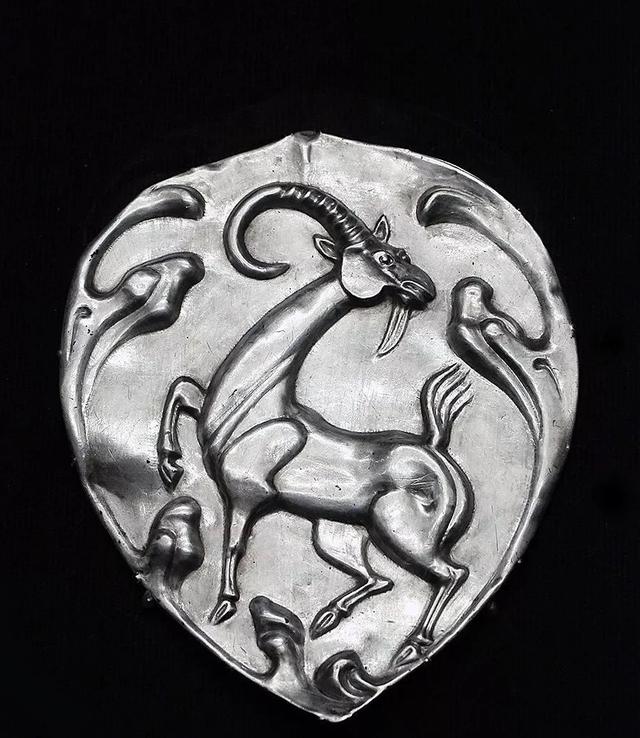
In the Western Han Dynasty, animal pattern silver Danglu was unearthed from the tomb of Haihunhou.

https://culture.ifeng.com/c/8BxwwrktnRI
